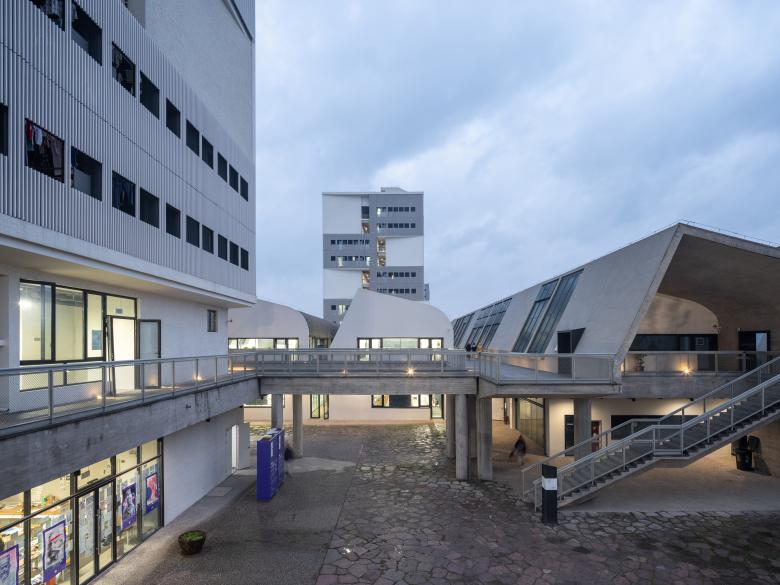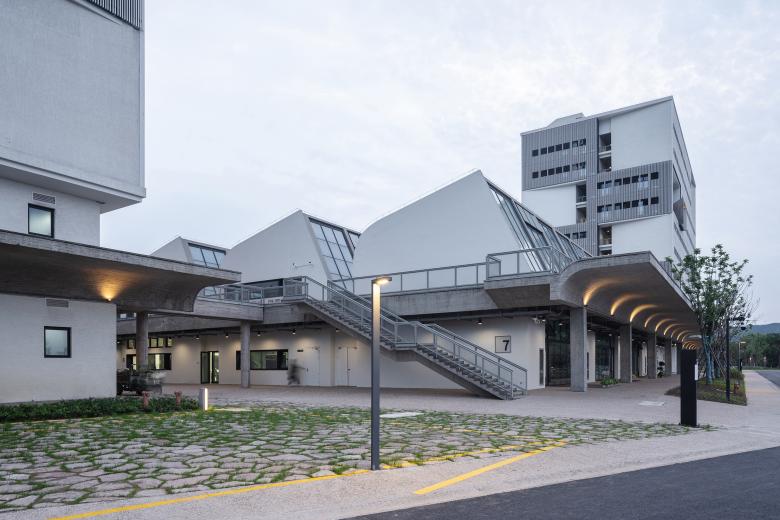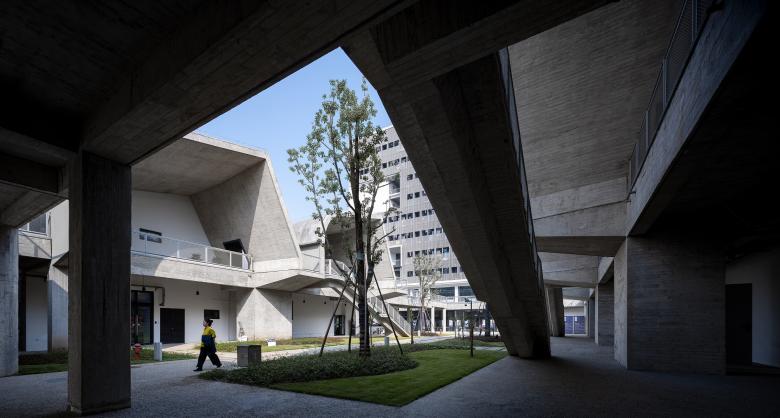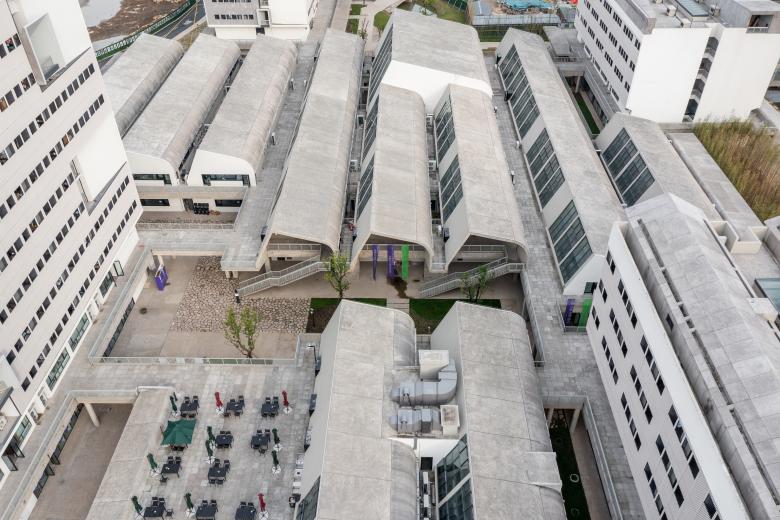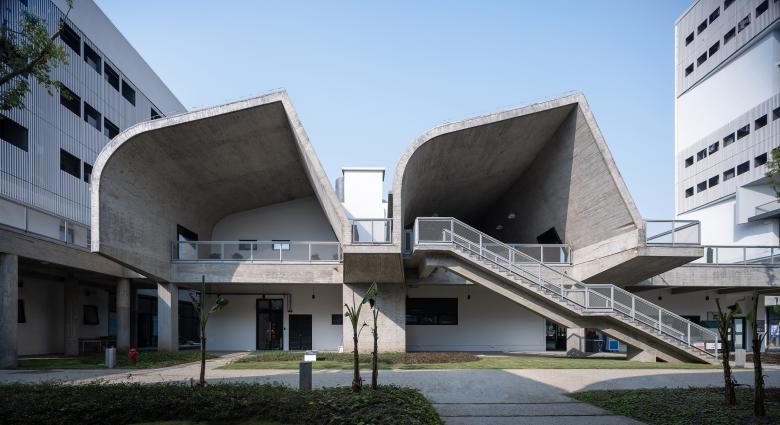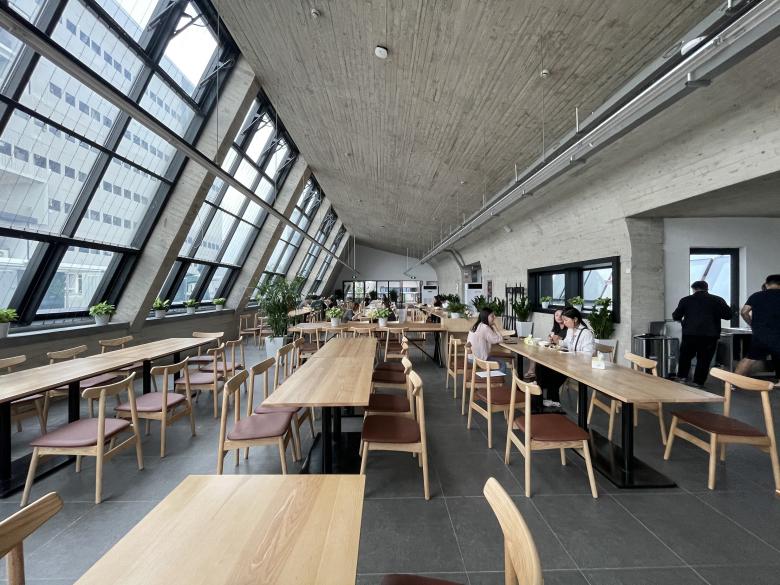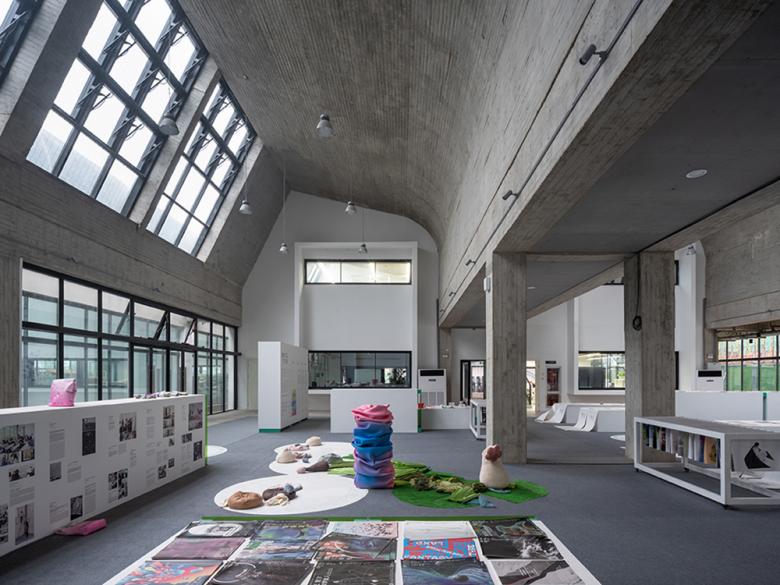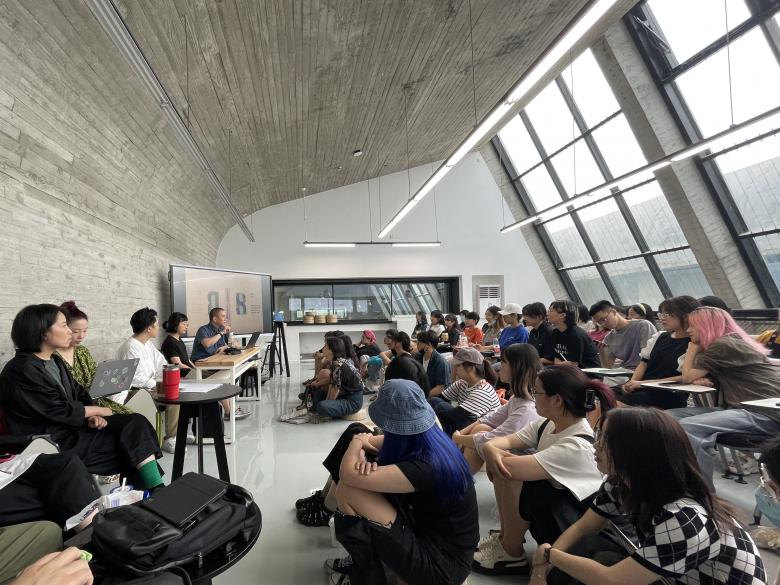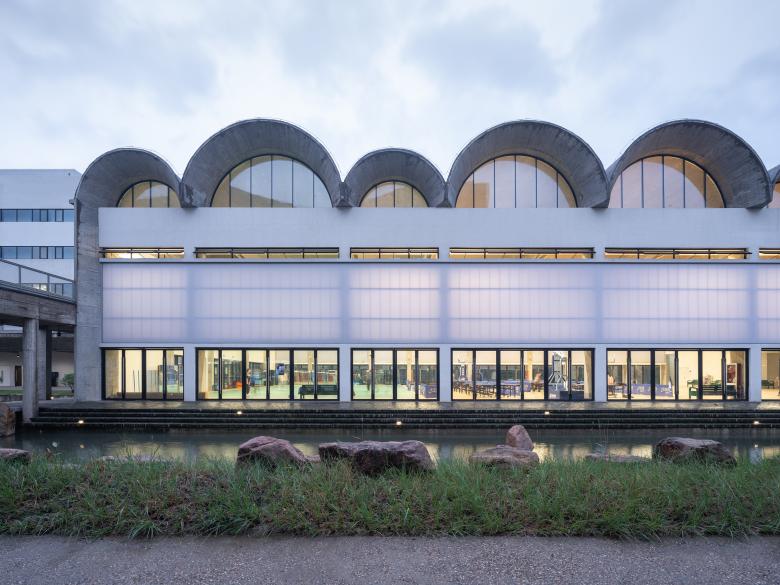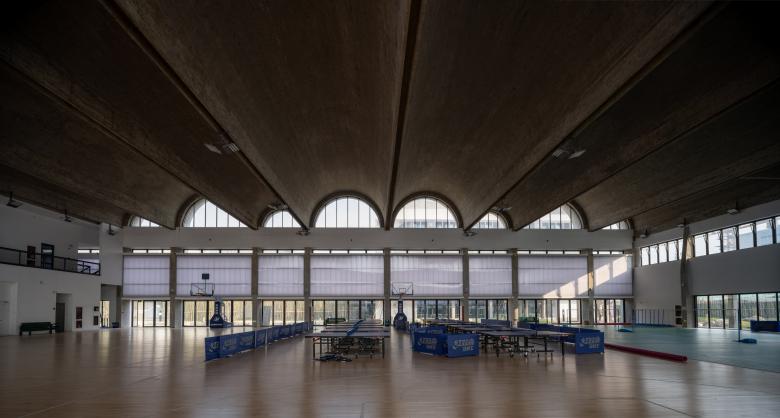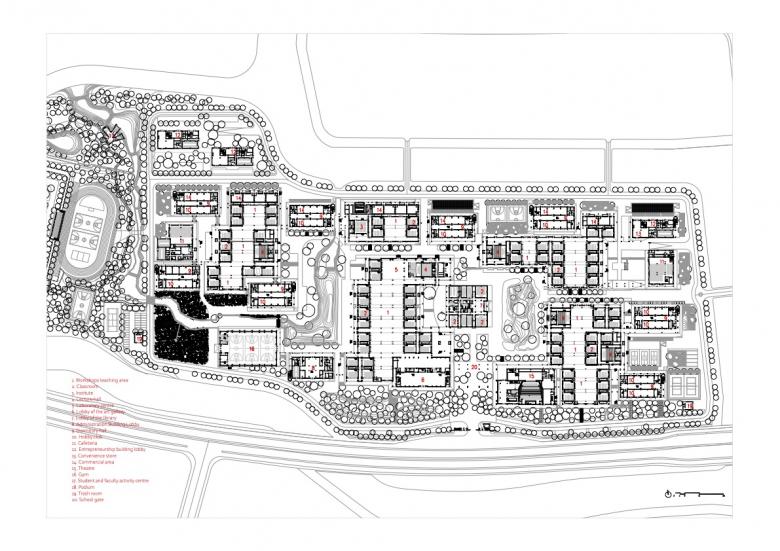Building for Comprehensive Education
The first phase of the new China Academy of Art (CAA) Liangzhu Campus in Hangzhou has been inaugurated and the second phase of the complex, designed by Atelier Feichang Jianzhu, is scheduled to open next year. The contract was awarded in 2018 through a design competition that also had to focus on an innovative education system. Four academic departments were planned for the Liangzhu Campus: the College of Innovative Design, the College of Art Management, the College of Foundational Education and the College of Continuing Education. It is designed for 3,000 full-time students and 1000 continuing education students.
The Chinese Academy of Art has been located in Hangzhou since 1928, on a site directly at the West Lake. The academy was founded with an educational concept that was new in China at the time, combining ideas from the West with those from its own tradition. The key professors of the first generation, such as Lin Fengmian, Li Jinfa, Liu Jipiao and Wu Dayu, had studied in Paris and also spent a year studying in Berlin at the height of the Expressionist movement in 1923. They brought this expressionist tendency into their teaching and sought an independent expression in art and design. After the foundation of the People’s Republic in 1949 the academy continued, but then with a new focus on socialist realism.
In the early 2000s, the old location at the West Lake had become too cramped and so the Xiangshan Campus was founded outside the city, and designed with expressive forms by Wang Shu and Lu Wenyu of amateur architecture. But even the Xiangshan Campus soon became too small, and five years ago the Academy decided to add another location in Liangzhou.
The question of the training system was of central importance to the architects. They proposed that as part of their basic education each student, regardless of their later specialisation, gain experience in design and architecture as well as in drawing and painting. Courses should be designed so that students solve real problems in interdisciplinary teams. In addition, the departments should be planned in such a way that the knowledge of the individual directions can cross-fertilise each other. This echoes what the first university in Hangzhou in the late 1920s was striving for with its reform programme, in contrast to the existing traditional academies. These reform ideas linked the first academy with the programme of the German Bauhaus in Weimar and Dessau, where the preliminary course introduced all students to the question of design from the ground up. The new academy in Liangzhou, in which interdisciplinary approaches and a general foundation course determine the curriculum, is thus associated with an opportunity for exploratory design that is about more than learning pregiven techniques.
For Atelier Feichang Jianzhu, it was important that the architecture encourages creative collaboration among students. Teaching and learning, research and practice, should merge in the spaces. In addition to the simple classrooms, large in-between spaces are therefore defined as open work halls where conferences, discussions or theatre and dance performances can take place. The rooms are evenly supplied with daylight via shed roofs and are given a characteristic expression by the sculptural form of the concrete shells. A variety of accesses, small inner courtyards and linear alleys create an informal meeting landscape whose quality is reflected in the spatial offer.
The teaching and learning units are located in two-storey, linear and densely staggered structures that create a uniform rhythm through their roof shapes. This structure is topped by the up to ten-storey-high student dormitories and administrative buildings, from which the view extends over the educational landscape. The students live above the learning units and this spatial proximity in a dense urban structure creates a link between learning and living, which is also intended to convey that learning cannot be separated from the rest of life.
The regular building structure in a rectangular grid creates well-proportioned open spaces on several levels, which gives a high quality to the pedestrian perspective. With 3,000 to 4,000 users, a critical mass has also been reached that can certainly spark an independent life. The robust materiality of concrete, white plastered wall pieces and transparent ground floors aid good orientation. Places such as the gym are highlighted by barrel roofs of varying widths, signalling their special status to the outside world.
The pedagogical concept together with the dense building structure are good prerequisites for a creative learning environment. This must now be used by the teachers and the learners to inform the kind of education that is urgently needed against the background of today’s challenges.
Location: Liangzhu, Hangzhou, China
Principal Architects: Yung Ho Chang, Lijia Lu
Project Team:
Architecture: Yin Shun, Wang Yue, Long Bin, Huang Shuyi, Wang Wenzhi, Liang Xiaoning, Liu Yang, Liu Chao, Zhang Bowen, Wang Shuo, Cheng Yishi, He Zelin, Shi Qi, Lin Shijie, Li Xiangting, Xie Yanxu, Jiao Huimin
Interior design: Wang Yue, Zhang Min, Han Shukai, Li Shuai
Landscape design: Shi Qi, Yin Shun, Lin Shijie
On-site supervision: Li Shiqi
Construction Drawing Design: Tongji Architectural Design (Group) Co., Ltd (No. 3 Architectural Design)
Lighting Consultant: TJAD-Architectural Lighting Studio
Building Area: 18.000 m2
Structure and Material: Reinforced concrete structure
Design Period: 2018.3–2019.6
Completion Time: 2021 (Phase 1)


